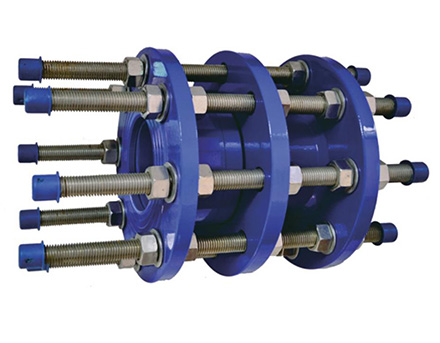Nov . 27, 2024 10:02 Back to list
Y-Strainer with ANSI 150 Certification for Effective Fluid Filtration Solutions
The Significance of Y Strainers in ANSI 150 Applications
In various industrial applications, the need for effective filtration systems cannot be overstated. Among the tools available for this purpose, the Y strainer stands out as a critical component, particularly when discussing ANSI 150 standard applications. The Y strainer, named for its distinctive Y-shaped design, plays an essential role in protecting pipelines and equipment from debris and impurities that may otherwise cause significant operational issues.
Understanding Y Strainers
Y strainers are a specific type of filter used primarily to remove unwanted solids from liquids or gases in pipelines. They are designed to allow the flow of fluid through a mesh screen, trapping particles and preventing them from damaging downstream equipment. The angular design of the Y strainer enables it to be installed in various orientations, making it highly versatile and operationally efficient.
The term ANSI 150 refers to a flange rating and is a standard established by the American National Standards Institute (ANSI). This rating indicates the pressure-temperature relationship and the types of connections suitable for the specific application. When a Y strainer is categorized under ANSI 150, it signifies that it is designed to handle pressures up to 150 psi and can be safely integrated into systems that comply with this standard.
Applications of Y Strainers
Y strainers are widely utilized across numerous industries, including water treatment, oil and gas, chemical manufacturing, and food processing. In each of these sectors, the need for maintaining the purity of the fluid is of utmost importance. For instance, in a water treatment facility, a Y strainer can filter out sand, debris, and other contaminants before the water is processed, ensuring that downstream machinery operates efficiently and effectively.
y strainer ansi 150

In the oil and gas industry, Y strainers are often installed in pipeline systems to prevent the ingress of particulates that could potentially clog valves, pumps, and other critical equipment. This proactive approach to filtration not only enhances operational reliability but also contributes to the safety of the entire system.
Advantages of Y Strainers
One of the primary advantages of Y strainers is their simple maintenance. The strainers are typically equipped with a removable filter element, which allows for easy cleaning or replacement without the need to disassemble the entire piping system. This feature significantly reduces downtime during maintenance and helps companies save on operational costs.
Moreover, the design of Y strainers promotes a low-pressure drop, meaning that they do not significantly hinder the flow of fluid. This efficiency is crucial in processes where maintaining flow rates is essential for production and operational efficiency. The durable materials used in the construction of ANSI 150 Y strainers ensure they can withstand harsh operating conditions, making them a reliable choice for various applications.
Conclusion
In conclusion, Y strainers designated for ANSI 150 applications are indispensable components in many industrial systems. Their ability to effectively filter out unwanted solids, prevent equipment damage, and maintain operational efficiency makes them essential for achieving reliable and safe operations. As industries continue to evolve and innovate, the role of filtration systems like Y strainers will undoubtedly remain crucial in ensuring the longevity and performance of industrial processes. For anyone involved in system design or maintenance, understanding the importance of selecting the right strainer is key to operational success and efficiency.
Share
-
Reliable Wafer Type Butterfly Valves for Every IndustryNewsJul.25,2025
-
Reliable Flow Control Begins with the Right Ball Check ValveNewsJul.25,2025
-
Precision Flow Control Starts with Quality ValvesNewsJul.25,2025
-
Industrial Flow Control ReliabilityNewsJul.25,2025
-
Engineered for Efficiency Gate Valves That Power Industrial PerformanceNewsJul.25,2025
-
Empowering Infrastructure Through Quality ManufacturingNewsJul.25,2025